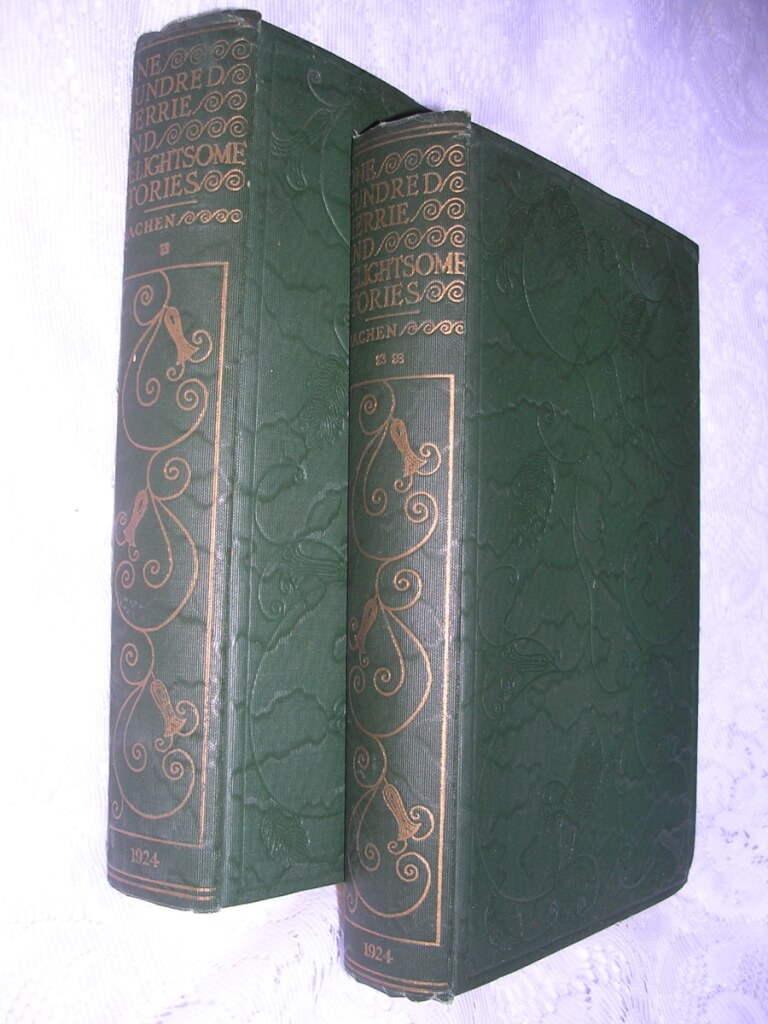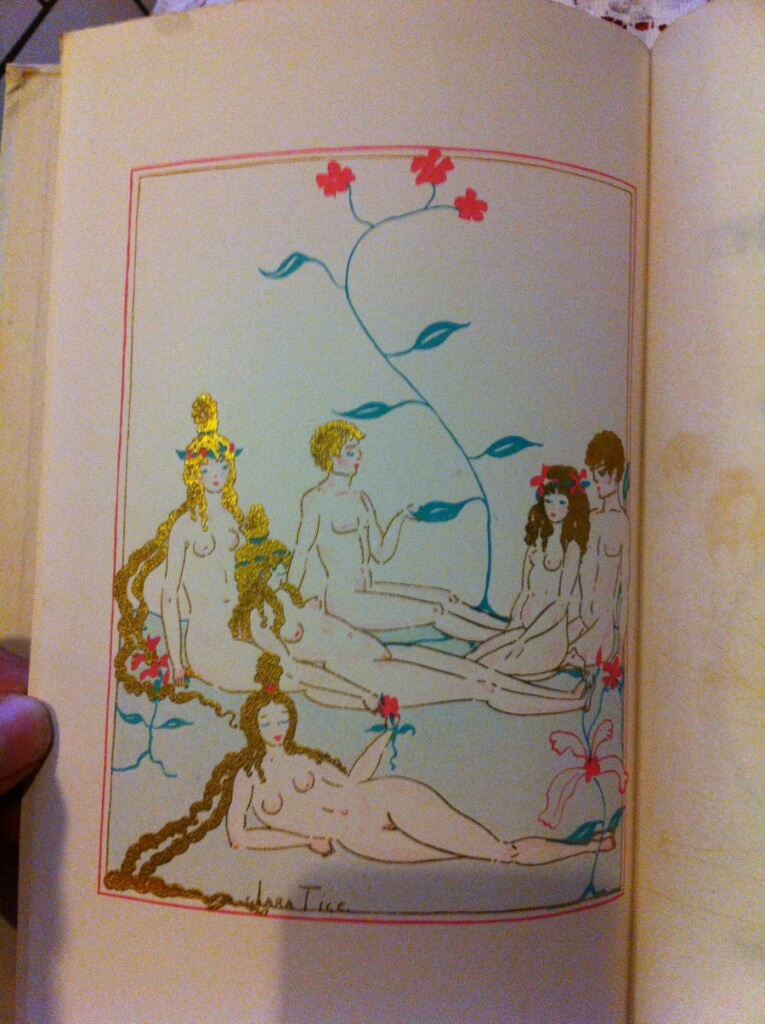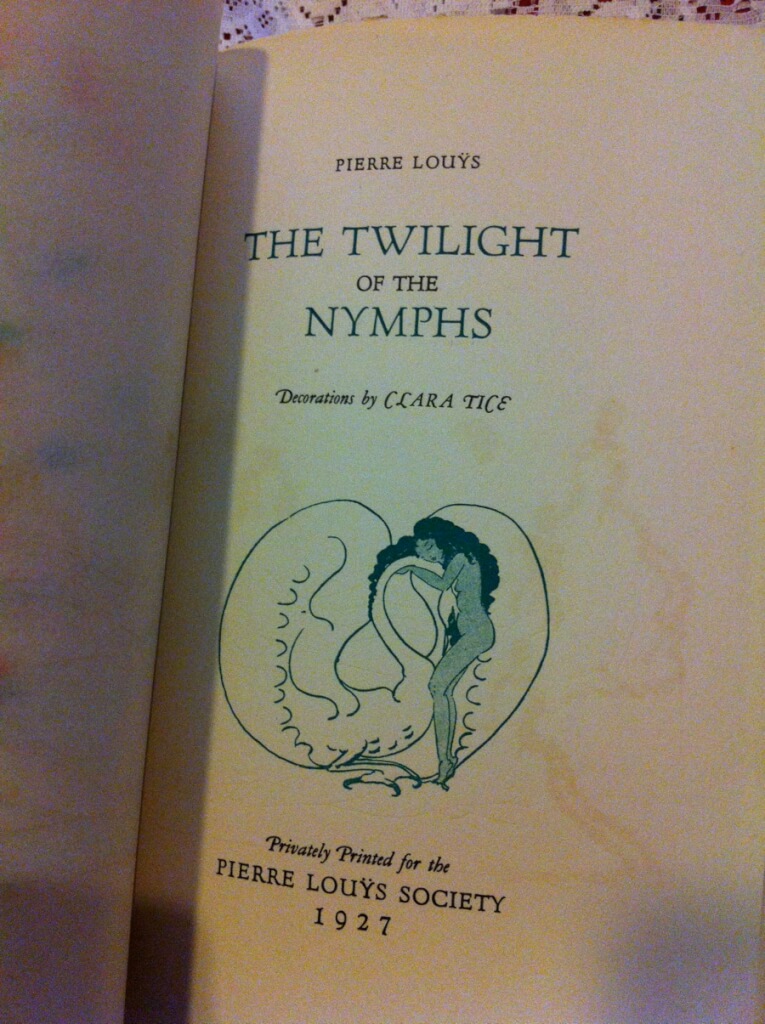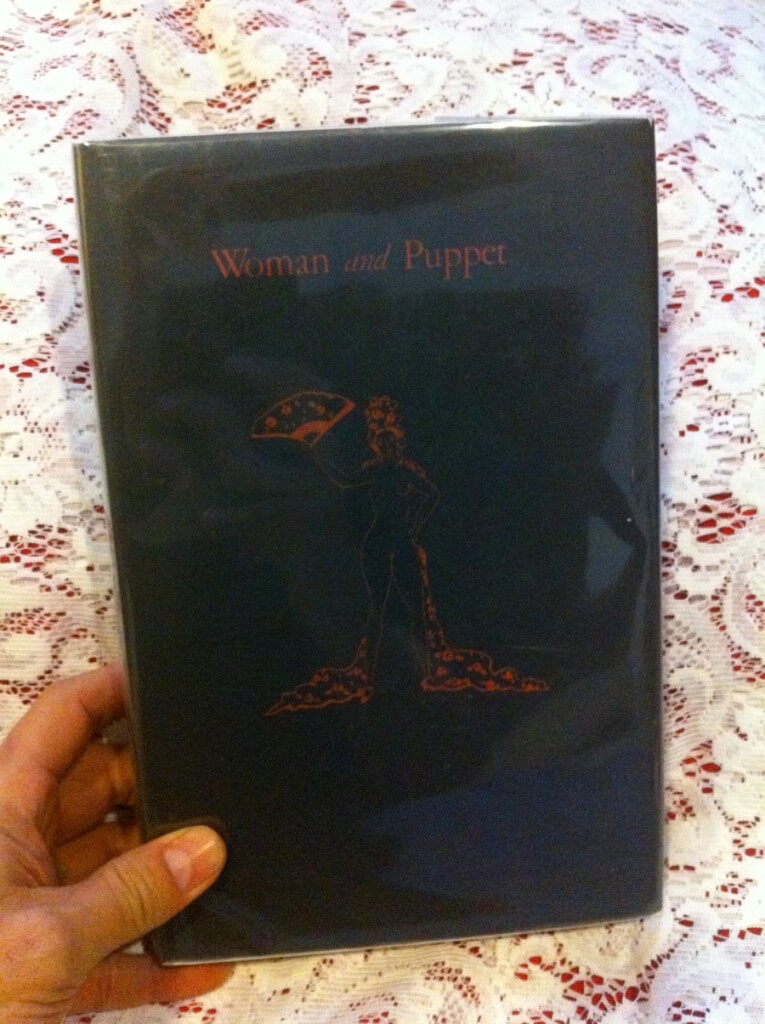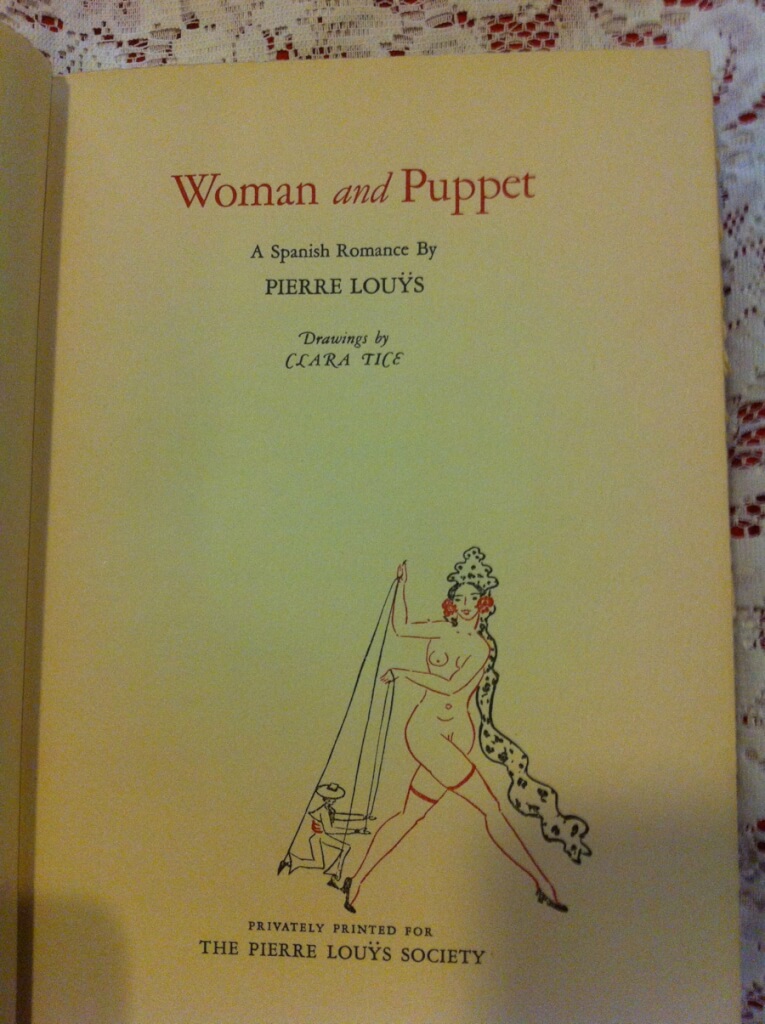Clara Tice was propelled into the spotlight of the New York art world quite unexpectedly when, in March 1915 the headline “Comstock Ban Brings Art Buyer” sparked the interest of the New York Tribune’s readership. Anthony Comstock, retired captain of the Society for the Suppression of Vice, raided an exhibition of her work at Polly’s Restaurant in Greenwich Village. Apparently, the seventy-year-old Comstock found her delicate little drawings of nude female figures too provocative for public display. Before he was able to take any further action one of the diners bought the pictures and thus saved them. The whole affair caught the attention of Frank Crowninshield, editor of Vanity Fair magazine, who published photographs of Tice’s nudes and announced a mock trial that was going to be held in her defense at Bruno’s Garrett on Washington Square South. “She will be tried,” the announcement read, “and therefore acquitted of the charges of having committed unspeakable, black atrocities on white paper, abusing slender bodies of girls, cats, peacocks and butterflies.” Later Tice would say that Comstock was her best press agent. This was only the first occasion when Comstock tried to confiscate Tice’s art – many others were to follow. Her art was the perfect target for him since her favorite subject were female nudes which she portrayed perfectly in oil as well as with just a few fast lines in her drawings. Her fame soon skyrocketed thanks to Comstock.
From then on she and her pictures were familiar sights in New York City. Clara Tice had several one-man exhibitions in Manhattan. She also designed theater curtains, menus, murals, posters and invitation cards for costume balls and worked on many other objects. Beginning in 1920 she started to illustrate books. Many of these were published by the Pierre Louÿs Society – a private society to avoid censorship.
It was not only Tice’s art that could be seen in magazines at that time but also images of herself. This occurred because she was seen as one of the important personalities of downtown bohemia and even called the “Queen of Greenwich Village.”
World War I and the Depression influenced not only everyday life, but also inflicted Tice’s work and art. The demand for lavishly illustrated books decreased and it became more difficult to sell works of art. Besides several minor projects Clara Tice’s greatest success after the war was the publication of ABC Dogs. It is an alphabet book in which each of the twenty-six letters are presented by an illustration of a dog whose name begins with this specific letter. Every dog picture is accompanied by a short, witty text written by Tice. Although this book once again brought her public recognition it did not take long before she was forgotten by the art community. She spent the last two decades of her life in a small apartment in Queens – creating art and taking care of the animals she loved so dearly.



